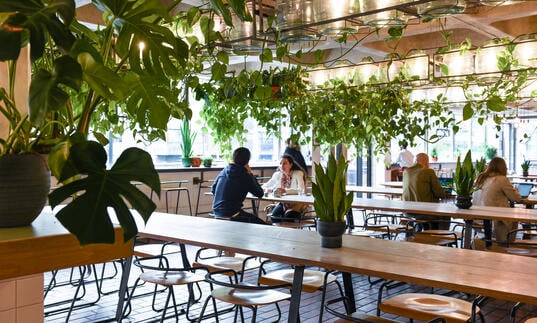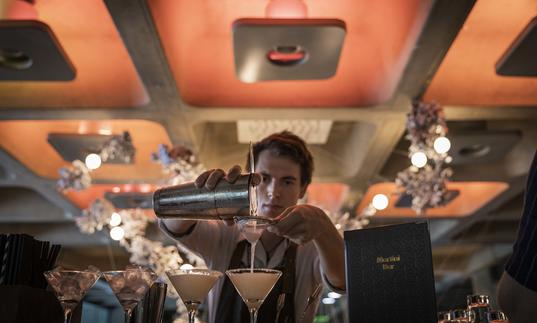
Booking fees
£1.50 booking fee per online/phone transaction.
No fee when tickets are booked in person.
Booking fees are per transaction and not per ticket. If your booking contains several events the highest booking fee will apply. The booking fee may be reduced on certain events. Members do not pay booking fees.
Programme Notes
Argentina has 5000 kilometres of coast, plus dozens of lakes and rivers, and yet when someone says “the coast” (la costa), they almost always mean a smaller portion of about 1200 of those kilometres – the ones that describe the belly on the map of the province of Buenos Aires, from San Clemente del Tuyú to Monte Hermoso. When Buenos Aires and its outskirts became a modern, hyper-populated megacity, it somehow unanimously decided to turn its back on its closest body of water (the Río de la Plata). When the heat of summer strikes with all its evil, people instead run away to the sea – the coast, la costa. The cities that formed from, and to cater for, this movement – places which occupy the largest segment of Mariano Llinás' film – are thus cities only devoted to rest. Perhaps the idea behind Llinas’ first film is that the leisure that exists in these odd, artificial cities comes from a free time that is also artificial, a construct coming from the obligation to work.
It was a brave endeavour of young Llinás, then in his mid 20s, to make a documentary that was at the same time a comedy, a drama, a thriller, a film about life underwater, and a portrait of an artist as an older man. A film involving Argentinians’ leisure time, when almost half the labour force was out of work, the country on the verge of a huge socio-economic crisis, and free time was like the plague. To make a film about the places where strangers gather to do nothing but hang out, to not work, at this time, was less like the band playing in the sinking Titanic, but rather a political act. Released in 2002, before the transformations of mass tourism in the 21st century, the film’s familiar, close lens focuses on the madness of vacation as a 20th century invention, in a way that may trigger a few thoughts about the distribution of capital and time. Whilst the working class were occupying the shores depicted in Llinás' film, Argentina’s upper classes were taking all their capital out of the country to Punta del Este, in Uruguay.
Films in Argentina were nothing like Balnearios at the time. There were commercial films, which are always the same everywhere. Then there was the Nuevo Cine Argentino (New Argentine Cinema), which examined the country and its present (catastrophic) state of affairs, by looking for poetic ways to be as close to reality as possible (such as Lucrecia Martel and Lisandro Alonso). There were very few comedies (Martin Rejtman made most of them, and Ana Katz made a strange first feature, El juego de la silla). And even if these national productions started out with low budgets, with a spirit closer to the freedom of amateurism (not unlike Balnearios), they later arrived to a place of professionalisation within the frameworks of production established by the laws of the cinema institute. Within this school of filmmaking, silence was valued as a signal of gravitas, and voiceovers were unusual and avoided as they were perceived to belong to other types of moving image, like television. Documentary, of course, was a very serious affair.
But Balnearios played by its own its own rules, and with it everything became a bit closer, a bit easier and, especially, a bit more doable. It was the first film to be produced by El Pampero Cine, a collective (formed by Laura Citarella, Mariano Llinás, Agustín Mendilaharzu and Alejo Moguilansky) that invented a new way of thinking and making films, as far away as possible from what others were doing, and in so they created a little revolution. El Pampero would make films full of artifice and narration, with ideas that could be written down and read out loud in a way that in no way resembled the stupidity of the news, but rather Argentina’s vast and heterogeneous literary tradition. El Pampero didn’t have the usual vertical structures for their film crews, and rejected any involvement with Argentina’s official cinema institute, arguing they wanted to do things their own way, on their own terms, and in their own time. For El Pampero, the industrial structure of independent film culture was as artificial as the balnearios in Llinás’ feature.
This is not only a film about leisure and labour, but a film about documentary and distance. The voiceover, elegant and literary, jocose (and sometimes a little bit evil), creates a large distance from its object as it dissects it. But slowly, almost unnoticeably, there is a switch. The position of the one writing and watching the film seems to suddenly be in two places at the same time: both in the sky, looking down, with a gods-eye like scrutiny of its object, and also at the beach (warm and full of sand) looking sideways towards, and with, its subject. It is a film of personal experience and idiosyncrasy, re-written as collective and common. It’s a shape-shifting film, approaching each of its four dividing chapters with varying distance and different tools. Comedy starts off as a method of entertaining observation, and then turns into a coping mechanism as the film approaches the darker sides of life by the water: the history of how the state destroyed valleys, mountains and cities through the construction of dams. Then, comedy switches to a relational tool as the film approaches the story of the amateur painter and full-time citizen Zucco (perhaps a distant relative of Zecca, one of cinema’s first illusionists). In Zucco, a man who has spent his life making work about his life by the water, the film finds its ideal, the person who embodies what the film has been wanting to do all along: to capture the essential complexity of living within a constant state of holiday. Vacation time is legally two weeks in Argentina. Perhaps Balnearios was an excuse to be by the water for much longer. When the film finds its hero, its role model, he for whom leisure by the sea is no longer artificial but a way of life, the film dissolves into the waves.
Lucía Salas is an Argentinian film critic, programmer, and filmmaker based in Spain. Her work navigates cinema, past and present, and it can be found mostly in La vida útil magazine and Punto de Vista film festival.
Cinema 1
Location
Barbican Cinema 1 is located within the main Barbican building on Level -2. Head to Level G and walk towards the Lakeside Terrace where you’ll find stairs and lifts to take you down to the venue floor.
Address
Barbican Centre
Silk Street, London
EC2Y 8DS
Public transport
The Barbican is widely accessible by bus, tube, train and by foot or bicycle. Plan your journey and find more route information in ‘Your Visit’ or book your car parking space in advance.




